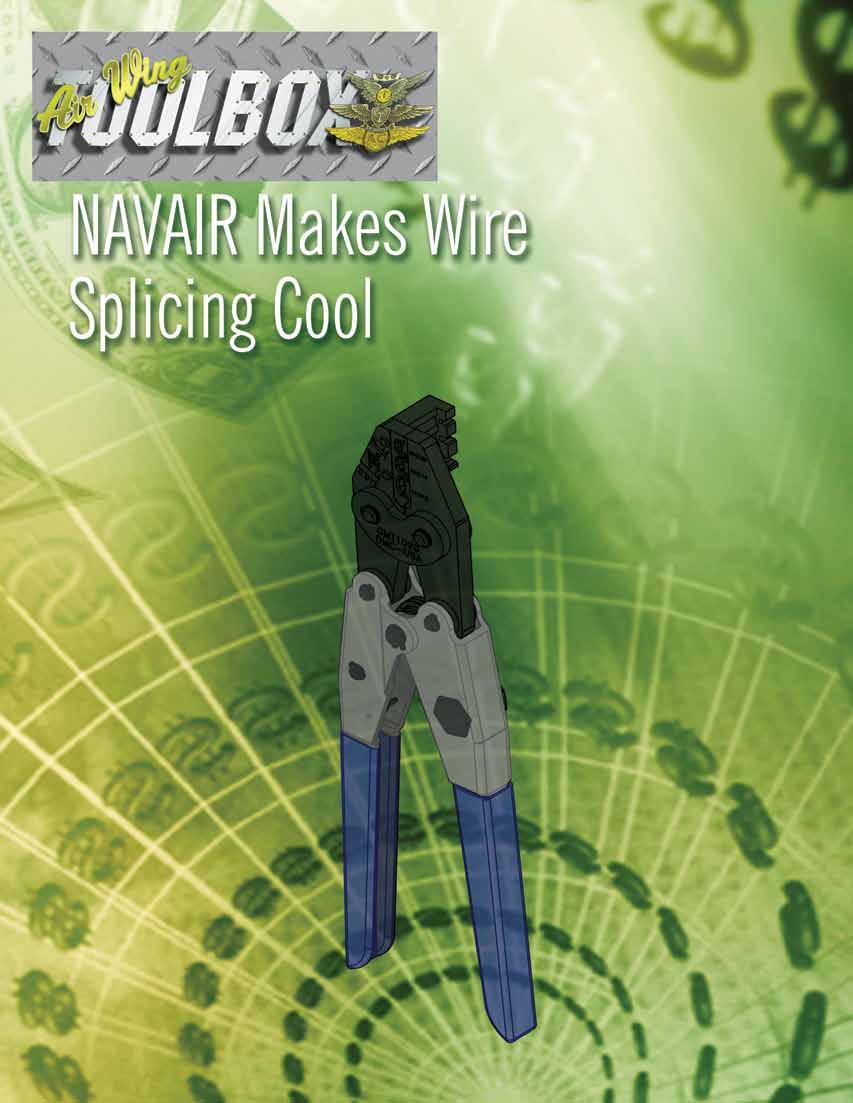
2 minute read
Air-Wing Tool Box: NAVAIR Makes Wire Splicing Cool
By Jim Jenkins
The NAVAIR Wiring Systems Team is bringing Navy and Marine Corps maintenance professionals an innovative way to seal electrical splices using a “cold” splice technique. How will cold splicing help maintainers? According to the Wiring Systems Team’s findings, cold splicing requires fewer tools than conventional splicing and has several engineered design advantages, making the task of splicing easier and safer.
Conventional splicing techniques require the use of controlled, hightemperature air in order to heat-shrink the sleeve, sealing the splice from the surrounding elements. Both types of conventional “heat guns” approved for use on fueled aircraft require the use of a nitrogen cart or an air compressor, which are large and cumbersome pieces of equipment. According to Brian Vetter, a wiring systems branch electrical engineer, this added gear means that conventional systems are “…rather inconvenient pieces of gear to use for a simple splice.”
Conventional heat guns also require a 110 volt AC power source, which can be a challenge on the flight deck or flight line. The ability to complete a splice repair on the flight deck or flight line without the additional logistical
footprint and authorization required for heat-applied splices will be a benefit to workplace safety. Cold splicing is a safer procedure in certain environments, such as in and around fueled aircraft, because of the absence of heat. The cold splice crimp barrel design is similar to that of the conventional style. But it has, integrated into the jacket, a gel material that creates an environmental seal once the conductors are pushed in. “No activation is needed, and there is no hardening of the gel,” Vetter said, “The material simply wraps around the inserted wire, and it self-seals. It’s like sticking your finger into Jell-O.” The sealing gel is not epoxy or silicone-based, so its consistency won’t change over time. It has held up during extreme-heat, saltwater-immersion, altitude, hot-and-cold cycling, and fluid-resistant tests. The test team also did an operational evaluation where they applied three cold splices to a United States Coast Guard H-60 in an area where the splices were exposed repeatedly to altitudes, winds, and even salt water. The test team evaluated the splices periodically for a year and found no splice failures. The new crimping tool used is also an improvement over conventional ones. The crimp barrels have a small inspection window which affords a view of the actual wire crimping, so you can see that it’s being done correctly. In addition, the crimp tool specifically designed for the cold-splice crimp barrels will not release until the proper crimp is applied. According to Vetter, “Rough estimates point to approximately $30 million in labor savings alone by simply moving from the current splicing techniques to the new cold-splice devices.” But have no fear, conventional splicing isn’t going away anytime soon. Cold splicing is simply a safer alternative to what’s currently available. For more information on cold splicing, please visit www.navair.navy. mil/jswag or email jswag@navy.mil.
Jim Jenkins worked for NAVAIR and was a Joint Services Wiring Action Group (JSWAG) member at the time of this writing.










